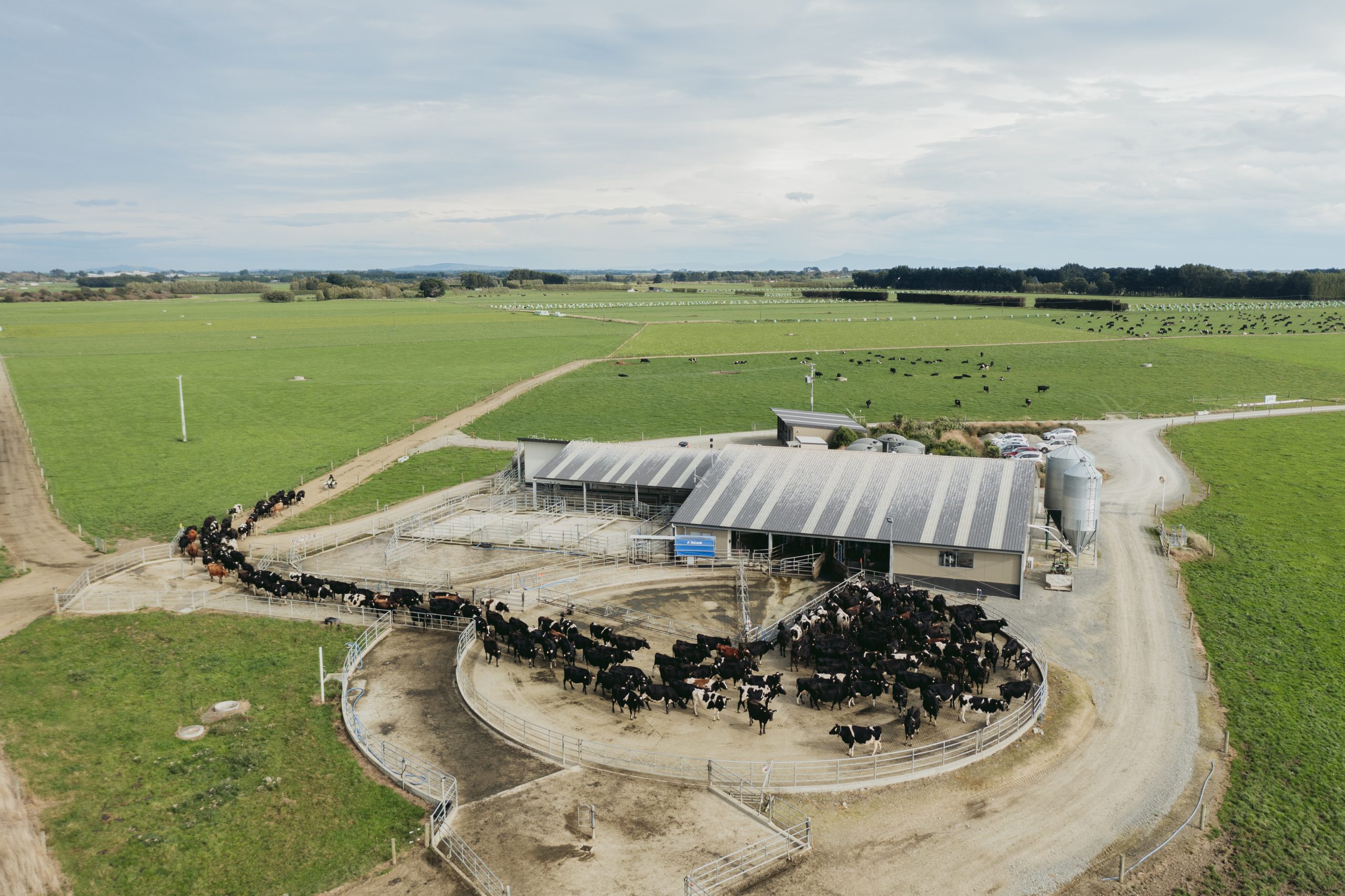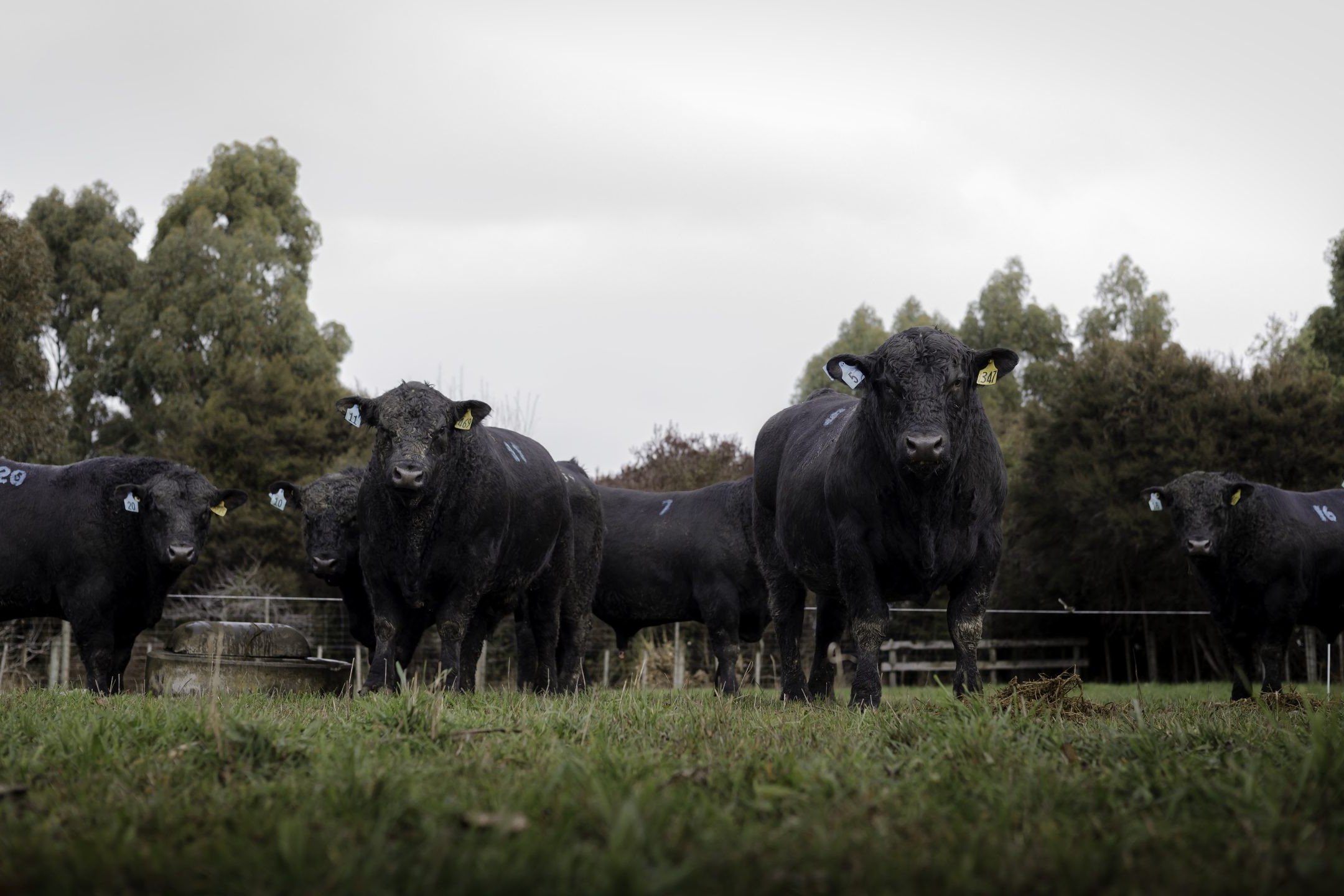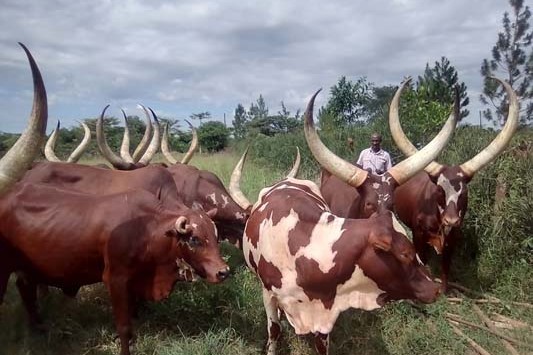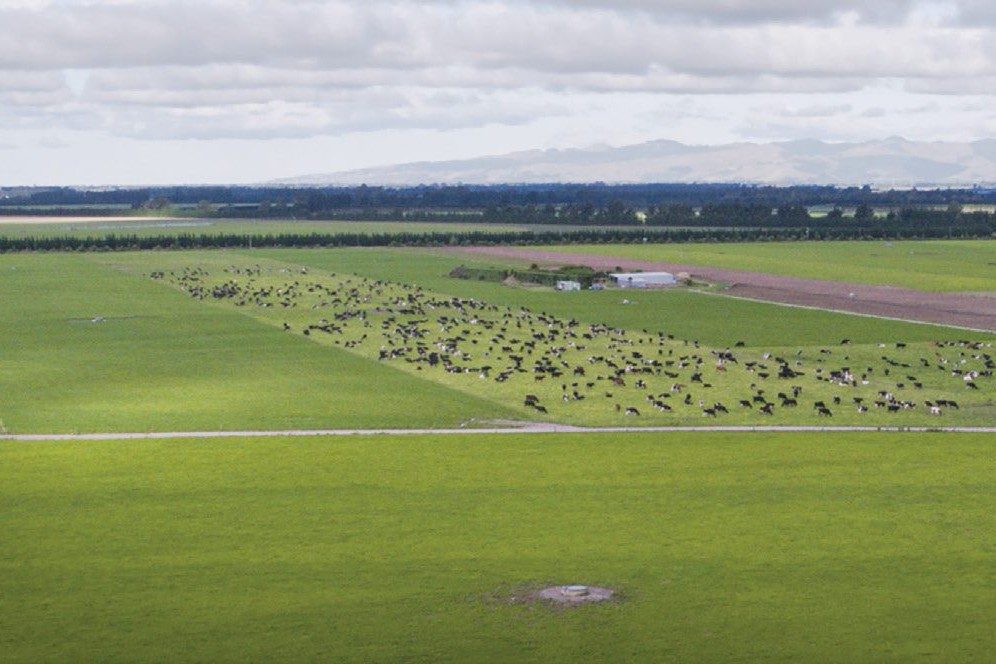Te Awamutu farmers Jamey Cross and Lisa Hazelton like to do a 360 review of their breeding programme, from insemination through to growing that calf into a heifer. The couple talked to Claire Ashton about how technology is helping them breed better cows. Photos by Emma McCarthy.
The owner-operator farming couple share complementary skills making them a dynamic duo on the farm they have owned for five years south of Te Awamutu. They run 290 cows on 119 hectares of rolling land with rocky outcrops. They have performed various roles in the industry from farm assistants, farm managers, contract milkers, and did a one-year sharemilking stint, before stepping into farm ownership.
Breeding cows has always been a passion and these farmers have been part of the Progeny Test Programme with CRV prior to joining the CRV Partner Herd-Data Programme in 2021.
Lisa describes the Data programme as “being like the Progeny Programme on steroids.” This programme meant having their whole herd DNA profiled which enabled the herd they’d amalgamated from different sources to be all clearly identified.
They now have a complete DNA profile of all the dams – and there were a couple of surprises as some of the cows’ identities didn’t match the DNA profile of the cow they believed they had actually bought.
DNA testing confirms parentage
The farmers consider they are on the right track now and as part of the programme, CRV genotype the calves. CRV use a merit index (similar to breeding worth).
Jamey wants to focus on desirable traits, such as breeding for good udders with strong ligaments, so if a sire isn’t producing that trait then he is gone from their breeding plan.
The three key traits they are looking for in sires are capacity, conformation, liveweight and fertility. He also likes to connect the dots and do a complete 360; the insemination, calving, growing the calf, and then seeing that calf grow into a heifer.
When Lisa records the pregnancy with the myHerd programme she feels that “Yes!” moment – there is always a thrill that the cow is successfully in calf.
With the Partner Herd-Data Programme, “CRV can get our data early and accurately to put back into their breeding programme to decide which bulls to keep.”
Lisa recommends keeping up data entry regularly, as for the programme to be of benefit to both the farmers and CRV, it is vital to have good, accurate data.
Originally, they were nominating sires, with a percentage of Semex and CRV bulls as Jamey was after a certain calf body type. Semex, with slightly bigger bulls was used to get more size and capacity.
CRV will do an inbreeding report, and they can decide which five bull traits will be the best option for that cow. In the past, they had used the catalogue system to choose bull traits and from there had moved to genomic bulls.
Length is important in liveweight because most cows, even if on the smaller side, can gain girth, but length also leads to more girth. At the end of the day though, the couple admit it can come down to what your personal preference is in an animal.
The ultimate goal is to get the 440kg Jersey animal as of December 1 and they are increasing their average herd liveweight yearly, so they want to match that liveweight in milksolids. Proof of this is that the farmers are up 50kg MS from the prior season.
“With a group of bulls to choose from, taking into account your figures and breeding, the programme can advance a lot quicker because you are using one-year-old bulls, and supposedly every year the bulls are better and thus produce faster genetic gain through that,” Jamey says.
“We have quite a well-bred herd as far as CRV genetics go so now we look for an outcross, perhaps a ‘wild card’ bull because we now have a number of cows who we need to carefully watch inbreeding of family lines. We use overseas outcross bulls offered through the CRV Progeny Test programme and Semex overseas bulls. “
The couple thinks that perhaps if they have a stellar cow they may nominate to try and breed that spectacular calf.
They know which maternal lines they want in the herd so they use bulls to improve specific traits.
“We do know what our dams are capable of so we look at what we may be lacking and pick the top five traits we want to breed for and they supply the sires for the most suitable match to improve those traits.”
Jamey believes there is incredibly good but under-utilised genetics in New Zealand, and that BW (breeding worth) hasn’t taken into account a lot of really good traits. This means you may have a high-producing cow but she may not last long in the herd. The compromise with the BW system favouring high-producing cows is you may have lost longevity traits such as good udders, strong legs, and conformation at the expense of production. Alongside that is the lack of focus on ToP scoring. Jamey and Lisa’s heifers are ToP scored every year. Another part of the programme is weighing, which is new to them and aids the ability to see what traits are coming through from sire choice into the herd. A strong cow immunity is something they are also now focused on.
The farmers input all of the cow health information as well, and then CRV can utilise that information in developing breeding value predictions from linking onfarm data with animal genotypes.
Feeding capacity
Jamey and Lisa have kept two bull calves for a few reasons. One being that Jamey can tell potential from their grazing habits, a skill he picked up when he worked for a farmer in the Wairarapa. That farmer would go to the sales with a tape measure and take the muzzle, girth, and length measurements, and purchase based on the quality of those measurements.
Electronic data can be collected on cow bites and the cows with wider muzzles and bigger mouths can fit more grass in – even if they take the same number of bites. Jamey believes those cows have an aggressive genetic code for feeding capacity. Simply put, they are ‘born hungry’.
One of the young bulls is an aggressive grazer who could grow into the type of bull they would like to breed from (though he couldn’t be put over all the heifers) and has been flagged by CRV for their screening process.
“We know what we want in the frame of animal we want to breed. So if we can breed a good, strong, healthy calf then it is a good start for heifer replacements and makes the bull calves more desirable.”
“It is confirming onfarm that the traits I am selecting are showing up in that bull- like nature of grazing, and if that bull was a heifer it would be a good one, so I am sort of connecting the dots,” says Jamey, who is learning more about the bull selection process.
“We want a good, solid, healthy, well-grown, easy to feed animal on-farm. It’s just like a good scone mix, if you get it right, it rises perfectly.”
Fertility, capacity and liveweight
“To address liveweight we do have to admit that we have a couple of smaller cows in the herd,” Jamey says, acknowledging they don’t have a herd of perfectly idealised cows.
“‘Midgey’ is actually an aggressive grazer and doesn’t care that she is smaller than the others. We will always have the outsiders, there will always be a bottom cow and a top cow you will never get rid of that – they are all individuals.”
They joke about the naming of the cows, as their farmworker particularly has a penchant for naming them. With a cow such as Midgey, they explain that she would have been bred to a Semex bull, to get more structure in the calf, and thus increase liveweight. The genetic pool is quite small within NZ and they reckon that there is a feeling in the industry that the next big thing may come from international genetics crossed with good NZ genetics.
Mating schedule
The first three weeks of the mating schedule are Jersey, and they follow that with one and a half weeks of Friesian. They want to stay Jersey-based and breed natural, high fertility cows, so in the first three weeks cows that are naturally fertile are identified, as there is no intervention in this period. They utilise AI with a good conception rate.
A lot of that is hereditary, if the dams are naturally fertile the offspring generally are as well, and it is a priority to maintain that block of animals in their herd. That way they always have fertility built into the herd. They inseminate with Jersey semen for three weeks, after three weeks they move to the Friesian which produces a very strong quick-growing calf that catches up to the Jersey weights by weaning time when the Jersey calves hit 100kg.
At 4.5 weeks they finish with polled Angus for a month, which makes the calves easily identifiable as a natural mating – they are easy calving and there is still a market for the crossbred progeny.
Jamey believes it is the simplicity of the programme and achieving consistent calf weights that are important.
“When Angus cross calves come through you know your AI calving is finished. If we hit 80 replacements we don’t need the crossbred calves which are incredibly marketable and saleable. So if we did lose a couple of calves in that first (Jersey) period then we still have good quality stock coming through,” Lisa says.
Essentially they are looking at the two-year period from the time the calf is born to a two-year-old entering the herd as a calving cow, when the focus is on growing.
“We’ve grown them to the best of our ability in that two-year window. During which time they have to hold a pregnancy, have a calf, and produce milk. They need to battle their way into a different herd or a different environment, find their place, and cows, as a rule, are generally honest.”
“We do breed very good cows here, and they are very good at making milk.”
If they have had some growing challenges such as drought, they may come in 20-30 kilos lighter and still have to grow, get in calf, and produce milk. What gives in that cycle is usually reproduction.
It is really important to hit that two-year liveweight for the whole system to be successful. Lisa hopes that every animal they breed and bring into the herd does 14-15 years and the only reason they cull is due to an animal health issue – they haven’t had to cull a cow on the basis of her production as yet.
Starting out as owner-operators, they did try sexed semen through a CIDRS programme but the results weren’t as good and conception rates were quite low.
“The process is very time-sensitive; there is a four-hour window to get that semen into the cow when she is on heat, or actually just when she is coming off heat is the optimum time to get the sexed semen in. It is quite a finicky sort of programme,” Jamey says.
Diet before mating
Jamey tries to keep the feed regime exactly the same prior to mating all the way through so there are no changes to upset them.
“To get the cow in calf in those first three weeks you need a balanced rumen and consistent feeding, and we don’t shut up or make silage during that period and only do so after the mating is finished. Due to the focus on providing good pasture quality during the October spring flush, and making sure the cows are well-fed, Jamey has to come in and do a bit of topping later on.
“There’s always a curveball in farming,” Jamey says. The latest was palm kernel being delivered in pelletised form, rather than loose, which meant it didn’t all fit in the silo. Lisa was hunting down a tarpaulin to cover the excess sitting on the trailers.
They never know what the day will bring, but these farmers certainly seem up for the challenge. To get in that much needed time off-farm, Jamey and Lisa enjoy taking their nieces fishing over in Whitianga, and Jamey also relishes his hunting expeditions down south – a Himalayan bull thar trophy has pride of place in their dining room.





